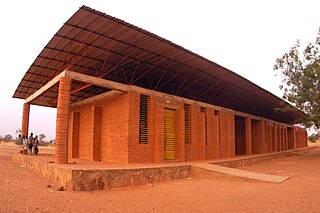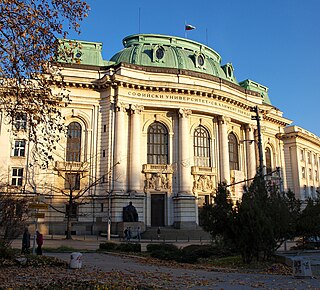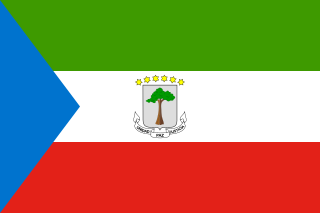
Education in Hong Kong used to be largely modelled on that of the United Kingdom, particularly the English system. Since 2012, the overhaul of secondary school diploma has introduced changes to the number of school years as well as the two-tier general examinations. The DSE has replaced the old HKCEE and the A-levels. Education policy in Hong Kong is overseen by the Education Bureau and the Social Welfare Department.
Education in Slovakia consists of a free education system based on 10 years of compulsory school attendance.
A state school or public school is a primary or secondary school that educates all students without charge. Such schools are funded in whole or in part by taxation.
Most of the schools in Macau are private or subsidized schools. As of the 2015-2016 school year, there were 74 primary and secondary schools that provided formal education, including ten public schools and 64 private schools. Ten schools were not a part of Macau's free education network. As of 2006 many of the schools in Macau are operated by Catholic organizations.

Education in Burkina Faso is structured in much the same way as in the rest of the world: primary, secondary, and higher education. As of 2008, despite efforts to improve education, the country had the lowest adult literacy rate in the world (25.3%).

Cameroon is a Central African nation on the Gulf of Guinea. Bantu speakers were among the first groups to settle Cameroon, followed by the Muslim Fulani until German domination in 1884. After World War I, the French took over 80% of the area, and the British 20%. After World War II, self-government was granted, and in 1972, a unitary republic was formed out of East and West Cameroon. Until 1976 there were two separate education systems, French and English, which did not merge seamlessly. French is now considered the primary language of instruction. Local languages are generally not taught as there are too many, and choosing between them would raise further issues.

Education in Bangladesh is administered by the country's Ministry of Education. The Ministry of Primary and Mass Education implements policies for primary education and state-funded schools at a local level. Education in Bangladesh is compulsory for all citizens until the end of grade eight. Primary and secondary education is funded by the state and free of charge in public schools.
Education in Kenya refers to the education system in Kenya. It is considered a basic right that should be offered to every individual. Education in Kenya predates to as early as the 18th century among the Swahili people. The earliest school was established by missionaries in Rabai. During the colonial era, the number of Kenyans with exposure to education steadily increased and a good number of them were privileged to proceed abroad for further education.

Education in Bolivia, as in many other areas of Bolivian life, has a divide between Bolivia's rural and urban areas. Rural illiteracy levels remain high, even as the rest of the country becomes increasingly literate. Bolivia devotes 23% of its annual budget to educational expenditures, a higher percentage than in most other South American countries, albeit from a smaller national budget. A comprehensive, education reform has made some significant changes. Initiated in 1994, the reform decentralized educational funding in order to meet diverse local needs, improved teacher training and curricula, formalized and expanded intercultural bilingual education and changed the school grade system. Resistance from teachers’ unions, however, has slowed implementation of some of the intended reforms.

Education in Bulgaria is guided and overseen by Bulgarian Ministry of Education and Science. Compulsory education includes three years of pre-primary education, primary education, and secondary education. Education is compulsory until age of 16. Compulsory education at state schools is free of charge. The state and private higher education schools, colleges and universities charge fees, although they offer students scholarships.

Education in Sri Lanka has a long history that dates back two millennia. While the Constitution of Sri Lanka does not provide free education as a fundamental right, the constitution mentions that 'the complete eradication of illiteracy and the assurance to all persons of the right to universal and equal access to education at all levels" in its section on directive principles of state policy at (27. Sri Lanka's population had an adult literacy rate of 96.3% in 2015, which is above average by world and regional standards. Computer literacy in 2017 28.3% and phone users in 2017 105%, website users 32% in 2017. Education plays a major part in the life and culture of the country, which dates back to 543 BC. Sri Lanka's modern educational system modeled after Christian missionary system was brought about by its integration into the British Empire in the 19th century. Education currently falls under the control of both the Central Government and the Provincial Councils, with some responsibilities lying with the Central Government and the Provincial Council having autonomy for others. Education institutions with a tradition dating back to 5 BC are largely ignored by the state.

Education in Cambodia is controlled by the state through the Ministry of Education in a national level and by the Department of Education at the provincial level. The Cambodian education system includes pre-school, primary, secondary education, higher education and non-formal education. The education system includes the development of sport, information technology education, research development and technical education. School enrollment has increased during the 2000s in Cambodia. USAID data shows that in 2011 primary enrollment reached 96% of the child population, lower secondary school 34% and upper secondary 21%.
The Secondary School Leaving Certificate is a certification obtained by a student on successful completion of an examination at the end of study at the secondary schooling level in India. The SSLC is obtained on passing the grade 10 public examination, which is commonly referred to as 'class 10 board examinations' in India. SSLC is a common eligibility examination popular in many states in India, especially Kerala, Karnataka, and Tamil Nadu. The SSLC is also called as Secondary School Certificate (SSC) in Andhra Pradesh, Telangana, Maharashtra and also as High School Certificate (HSC) in Madhya Pradesh and also as Matriculation in many states of India.
Purasawakkam, also known as Purasaiwakkam or Purasai / Purasawalkam, is a residential shopping area in the district of Chennai in the state of Tamil Nadu, India. It is close to the Chennai Central and Chennai Egmore railway stations.
Education in Nicaragua is free for all Nicaraguans. Elementary education is free and compulsory although this is not strictly enforced. Many children are not able to attend if their families need to have them work. Communities on the Atlantic Coast have access to education in both Spanish and the languages of the native indigenous tribes that live in the more rural areas of Nicaragua. Higher education has financial, organic and administrative autonomy, according to the law. Freedom of subjects is recognized. The school year runs from February through November.

Education in Ivory Coast continues to face many challenges. Among sub-Saharan African countries, Ivory Coast has one of the highest literacy rates. According to The World Factbook - Central Intelligence Agency as of facts. The literacy rate for adults remains low: in 2000, it was estimated that only 48.7% of the total population was literate. Many children between 6 and 10 years are not enrolled in school, mainly children of poor families. The majority of students in secondary education are male. At the end of secondary education, students can sit the Baccalauréat examination. The country has universities in Abidjan, Bouaké, and Yamoussoukro.

There have been major strides with Education in Equatorial Guinea over the past ten years, although there is still room for improvement. Among sub-Saharan African countries, Equatorial Guinea has one of the highest literacy rates. According to The World Factbook - Central Intelligence Agency as of 2015, 95.3% of the population age 15 and over can read and write in Equatorial Guinea were respectively literate. Education in Equatorial Guinea is overseen by the Ministry of Education and Science (MEC). Split into four levels, preschool, primary, secondary, and higher education, the Equatorial Guinea's educational system only deems preschool and primary school mandatory. Education in Equatorial Guinea is free and compulsory until the age of 14. Although it has a high GNI per capita, which, as of 2018, was 18,170 international dollars, its educational outcomes fall behind those of the rest of West and Central Africa. In 1993, the gross primary enrollment rate was 149.7 percent, and the net primary enrollment rate was 83.4 percent. Late entry into the school system and high dropout rates are common, and girls are more likely than boys to drop out of school. As of 2015, the net enrollment rates for each education level are as follows: 42 percent for preschool, between 60 percent and 86 percent for primary school, and 43.6 percent for secondary school. UNESCO has cited several issues with the current educational system, including poor nutrition, low quality of teachers, and lack of adequate facilities.

Tamil Nadu is one of the most literate states in India. The state's literacy rate is 80.33% in 2011, which is above the national average. A survey conducted by the Industry body Assocham ranks Tamil Nadu top among Indian states with about 100% Gross Enrollment Ratio (GER) in primary and upper primary education.

In India, the Department of General Education is the Government of Kerala's body for school education. Founded in 1995, The department administers school education from pre-primary level to the higher secondary level and teacher training. the department is in charge of conducting Secondary School Leaving Certificate examinations in Kerala State. Secondary School Leaving Certificate examinations are usually held in March and results are announced on April or May.












